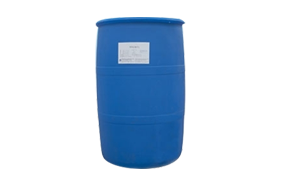Among non-ionic surfactants, surfactants with hydrophobic chains of 10 ~ 11 carbon atoms and polyoxyethylene chains of 6 ~ 8 EO units seem to be good wetting agents. In the polyoxyethylene polyoxypropylene copolymer, the wetting force increases with the increase of the molecular weight of the polyoxypropylene segment in the molecule, and reaches a high wetting force when the EO content in the molecule is low. However, in order to obtain soluble and surface active molecules in the aqueous phase, there must be a certain number of EO units.

Adding wetting agent into abrasive can improve the efficiency and quality of dispersion process, and adding wetting agent into coating can improve the wettability of substrate. However, the amount of such surfactants should be as low as possible to avoid problems such as water sensitivity and foaming.
Many surfactants are detergents and have the effects of solubilizers and cleaning agents. Such surfactants usually have a straight chain structure with a hydrophilic group at one end, such as sodium lauryl sulfate. Detergents are sometimes used in coatings, but they are usually the main component used as a cleaning agent for the substrate to be coated. The cleaning of substrate is very important to give full play to the good performance of coating. However, residual detergent on the substrate will reduce the wettability and adhesion of the coating.
An important application of surfactant in coating industry is as wetting agent. It is used to improve the wettability of pigments and the wettability of substrate surface. Wetting generally refers to the displacement of air on the solid surface with liquid, but wetting is also related to reducing the interfacial tension between solid and liquid.
Most surface coatings contain solid particles such as pigments and fillers. The dispersion of these particles requires effective wetting first. Adding surfactant to the water containing pigment can reduce the interfacial tension between solid-liquid interface, so that water can wet pigment particles.
When the hydrophilic group of surfactant is in the center of two hydrophobic chains, the surfactant has strong wettability. For example, sodium Diisooctyl succinate sulfonate (aerosol OT) and alkynediol surfactant (SURFYNOL 104) are very effective wetting agents.